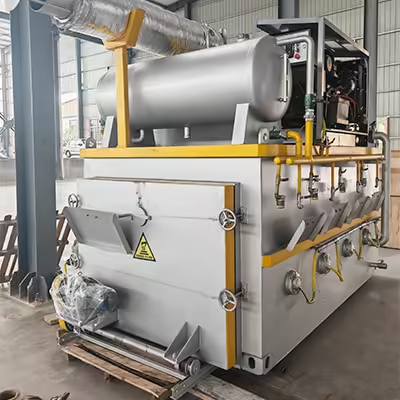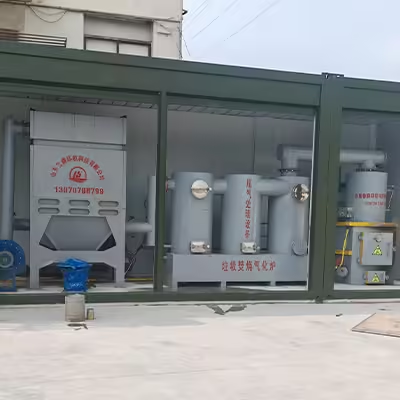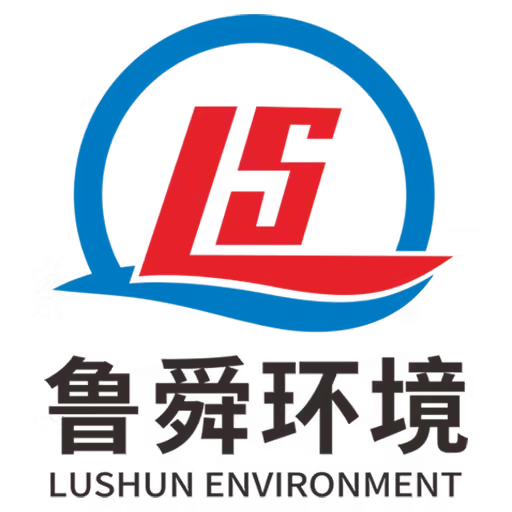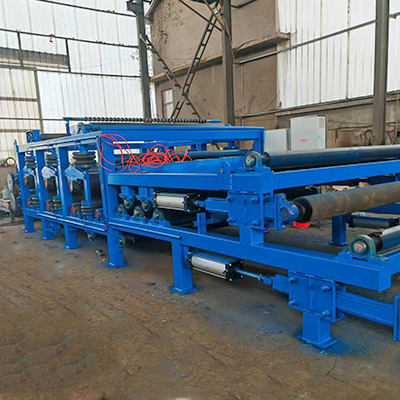Welcome to My Blog! 🌟
I’m so glad you’re here! Before we jump into the exciting content, I’d love for you to connect with me on my social media platforms. It’s where I share extra insights, interact with our amazing community, and post regular updates. Here’s how you can join the conversation:
📘 Facebook: Follow me on Facebook for more updates
Now, let’s dive into the journey ahead. I hope you find everything here both engaging and valuable. Together, let’s explore, learn, and grow! 🚀
Table of Contents
Introduction
In the realm of modern waste management, hazardous waste incinerators play a critical role in safely disposing of dangerous materials. These high-temperature combustion systems are designed to eliminate a wide range of hazardous substances, including medical waste, chemical residues, and industrial by-products. Choosing the right incinerator is not just about purchasing a machine—it involves evaluating technical capabilities, safety measures, compliance with regulations, and long-term sustainability.
Selecting unsuitable hazardous waste incinerators can lead to environmental pollution, health hazards, and regulatory violations. Therefore, making an informed choice based on key operational and environmental factors is essential. This blog delves into seven vital aspects that must be considered to ensure your investment is both effective and responsible.
NO 1. Regulatory Compliance: A Non-Negotiable Requirement
Hazardous waste incinerators must meet stringent environmental and safety regulations, which are enforced by national and international authorities to minimize the risks associated with toxic waste treatment. In the United States, the Environmental Protection Agency (EPA) enforces the Resource Conservation and Recovery Act (RCRA), a comprehensive framework that governs the handling, treatment, and disposal of hazardous waste. Meanwhile, in the European Union, similar oversight is ensured under the Waste Framework Directive and the Industrial Emissions Directive, which dictate emission thresholds, operating permits, and technical standards.
When evaluating hazardous waste incinerators, it is critical to request and verify documentation that proves regulatory compliance. This should include valid environmental permits, recent emissions monitoring data, detailed environmental impact assessments, and confirmation of the specific types of waste the unit is authorized to process. Compliance should also be forward-looking. With regulatory standards tightening globally, your selected incinerator must be capable of adapting to new laws and sustainability demands.
Non-compliance is not only a legal issue—it can be a financial and reputational disaster. Penalties for violations may include severe fines, forced facility closures, or even criminal charges in extreme cases. In contrast, a fully compliant system demonstrates operational responsibility, earns community trust, and ensures uninterrupted business continuity.
NO 2. Combustion Efficiency and Temperature Control

Combustion efficiency is one of the most critical technical factors in hazardous waste incineration. High combustion efficiency means the waste is completely oxidized, reducing it to harmless gases and inert ash while minimizing harmful byproducts such as carbon monoxide, volatile organic compounds (VOCs), and toxic substances like dioxins and furans. To achieve this level of performance, incinerators must reach and maintain combustion temperatures above 850°C, particularly when dealing with organic hazardous materials.
Modern incinerators often incorporate automated temperature regulation systems that use real-time data from thermocouples and oxygen sensors. These advanced controls maintain the optimal air-to-fuel ratio throughout the combustion process, which improves energy efficiency and reduces emissions. Some systems even employ secondary combustion chambers operating at higher temperatures (1100°C or more) to ensure the complete destruction of persistent organic pollutants.
By choosing an incinerator with proven high combustion efficiency, operators can expect better waste reduction rates, lower emissions, and improved operational cost control due to reduced fuel use. Over time, these advantages translate into substantial savings, reduced environmental impact, and enhanced regulatory compliance.
NO 3. Waste Type Compatibility and Flexibility
Hazardous waste is highly heterogeneous, ranging from medical sharps and pathological waste to flammable solvents, sludge, pesticide residues, and industrial chemicals. As a result, the flexibility of your incinerator—its ability to handle various types and forms of hazardous waste—is a significant factor in long-term usability and cost-effectiveness.
Different incinerator designs offer varying degrees of adaptability. For example, rotary kiln incinerators are particularly effective for mixed solid and liquid hazardous waste streams. They offer continuous rotation, which enhances mixing and uniform heating, making them ideal for a broad range of waste types. Fluidized bed incinerators, on the other hand, are known for their efficiency in handling fine granular waste and sludges due to the fluidizing action of hot air passing through a sand bed. Multi-chamber designs are well-suited for sequential thermal treatment, ideal for highly regulated waste with complex combustion requirements.
Evaluate whether the system supports pre-treatment features such as shredders, dryers, or feeding mechanisms that accommodate waste conditioning. Systems with modular construction may also allow future expansion or reconfiguration to match evolving waste streams. The more versatile the incinerator, the more resilience your waste management system will have in the face of changing industry standards and waste profiles.
NO 4. Emission Control Technologies

Effective emission control is at the heart of environmentally responsible hazardous waste incineration. Burning toxic materials inevitably generates pollutants, and without the proper treatment, these emissions can severely impact air quality and public health. Therefore, modern incinerators must be equipped with sophisticated emission control systems that capture and neutralize harmful substances before they are released into the atmosphere.
Common technologies include baghouse filters for particulate matter, acid gas scrubbers for sulfur oxides (SOx), selective catalytic reduction (SCR) units for nitrogen oxides (NOx), and activated carbon injection for the control of mercury and dioxins. Wet scrubbers are especially effective in removing acidic gases and can be combined with dry systems for optimal performance. Some units also integrate continuous emissions monitoring systems (CEMS), which provide real-time data to operators and regulators to ensure compliance is maintained at all times.
Investing in an incinerator with advanced emission controls not only ensures regulatory compliance but also demonstrates a company’s commitment to sustainability and public health. Furthermore, clean operations reduce the risk of community opposition, enhance brand reputation, and may qualify your business for green certifications or carbon credits in certain regions.
NO 5. Operational Costs and Energy Recovery Options
While upfront costs are significant, the total cost of ownership for hazardous waste incinerators includes energy consumption, maintenance, labor, and regulatory fees. Assessing operational costs is essential for long-term budgeting.
Some systems offer energy recovery features, converting heat from incineration into usable steam or electricity. These features can reduce overall energy expenditures and even create revenue streams in certain industries.
Make a detailed comparison of models before making a final decision. Consider both CAPEX (Capital Expenditure) and OPEX (Operational Expenditure) to identify the most economically viable option.
Comparison Table of Hazardous Waste Incinerators
| Feature | Model A | Model B | Model C |
|---|---|---|---|
| Maximum Temperature | 1100°C | 1000°C | 1200°C |
| Waste Type Compatibility | Chemical, Medical | Industrial, Medical | All types |
| Energy Recovery | Yes | No | Yes |
| Emission Control System | Scrubber + Bag Filter | Bag Filter | Scrubber + Catalyst |
| Regulatory Compliance | EU & EPA Certified | EPA Certified | Global Certifications |
NO 6. Installation and Maintenance Considerations
The installation process of hazardous waste incinerators can be complex, requiring site preparation, utility integration, and environmental permitting. Choose manufacturers that offer comprehensive installation support, including training and testing.
Maintenance is another critical factor. Incinerators that come with predictive maintenance systems or remote diagnostics significantly reduce downtime. A good supplier will also offer spare parts availability and service contracts to ensure continued performance.
Long-term reliability starts with quality installation and is maintained through proactive service planning.
NO 7. Reputation and After-Sales Support

Always consider the reputation of the manufacturer and the quality of their after-sales service. Hazardous waste incinerators are long-term investments, and the level of post-purchase support you receive will impact operational success.
Check customer reviews, request client references, and verify service network availability in your region. A responsive support team can resolve issues quickly, minimizing costly delays.
The best incinerators come from companies that stand behind their products with warranties, support teams, and training programs.
Conclusion
Choosing the best hazardous waste incinerators is a multi-faceted decision that requires balancing environmental, technical, and economic factors. By focusing on key criteria such as regulatory compliance, combustion efficiency, and emission control, organizations can ensure safe and cost-effective waste disposal.
Avoiding substandard incinerators protects your business from legal issues and operational inefficiencies. In contrast, investing in high-quality systems brings long-term benefits, including improved environmental performance, lower costs, and regulatory peace of mind.
FAQ
What types of waste can hazardous waste incinerators handle?
These incinerators can process a wide range of materials, including medical, chemical, pharmaceutical, and industrial waste.
How do I ensure compliance with environmental laws?
Choose incinerators that come with certification and emission monitoring systems. Confirm that they meet local and international standards.
Are energy recovery systems worth the investment?
Yes. Energy recovery systems can reduce operational costs by converting waste heat into usable power, making them cost-effective over time.
What is the typical lifespan of a hazardous waste incinerator?
With proper maintenance, a high-quality incinerator can last 15–25 years or more, depending on usage conditions.
Is operator training necessary?
Absolutely. Proper training ensures safe and efficient operation, minimizes risks, and helps meet compliance requirements.






